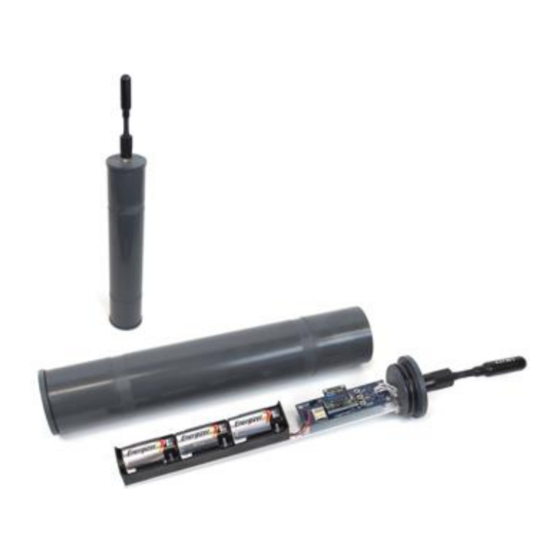
Summary of Contents for Loggerhead SNAP
- Page 1 SNAP MANUAL Multi-card Long-Term Underwater Acoustic Recorder Manual v1.0 Updated 13 June 2022 www.loggerhead.com Snap Manual...
- Page 2 Overview Hardware Snap is datalogger designed for collecting large amounts of underwater acoustic recordings. Setup is designed to run through a simple button interface with a display. No PC is needed to setup and deploy the Snap. • HTI-96-min Hydrophone •...
- Page 3 FAT32. Appendix 1 describes software that can be used to do this on Windows PCs. The card shipped with the Snap from Loggerhead has already been formatted as FAT32. Step 2. O-rings. Clean and grease o-rings with silicone grease and insert into the groove on the ring.
- Page 4 (if you are using the HTI-96-min). Step 6. Close lid. Snap the lids into place. The water pressure will hold the lid in place underwater. If you are deploying where the water is warm, it is best to open the Snap and close the lid outside just prior to deployment.
- Page 5 Upon retrieval, open the top lid by pushing up on opposite sides of the lip, and pull out the Snap board. If a recording is still happening (red hydrophone LED on and green LED on board flashing), hold down the UP + DN buttons at the same time.
- Page 6 1. Click on the drive with the microSD card. 2. Click Format button the right 3. In pop-up dialog box Change cluster size to 64 KB. Click OK 4. On top of screen click on Execute 1 Operation Snap Manual...
- Page 7 Snap Manual...
- Page 8 Appendix II Two settings can only be changed by placing a text file on the microSD card, placing it in the Snap, and turning the Snap on. The Snap ships with defaults that work in most situations. setup.txt Commands All commands are optional. Default column lists values if no setting in setup.txt file.
- Page 9 HTI Hydrophone and Recording Gain The Snap uses a hydrophone manufactured by High-Tech Inc. The sensitivity of the hydrophone will be on a specification sheet included with the shipment (typically -170 dBV/uPa or -180 dBV/uPa). The hydrophone has a red LED in the end to indicate when it is getting power.


Need help?
Do you have a question about the SNAP and is the answer not in the manual?
Questions and answers